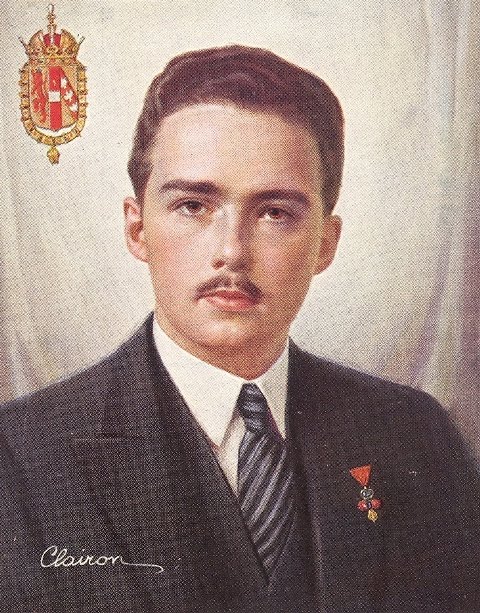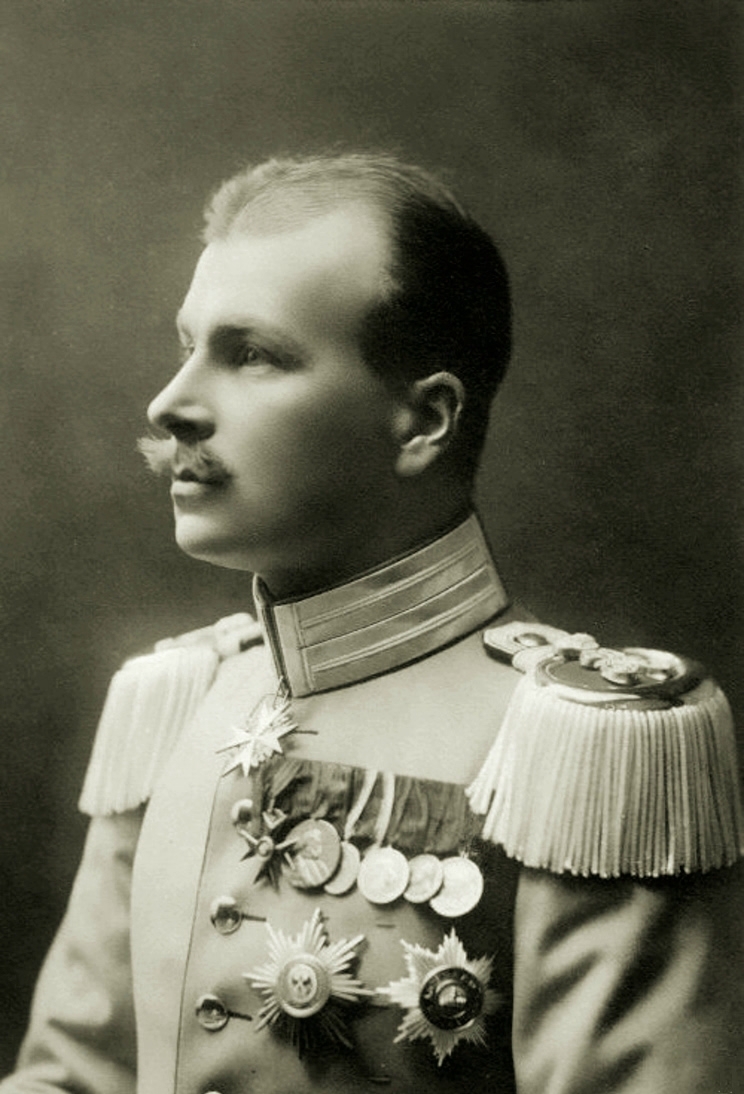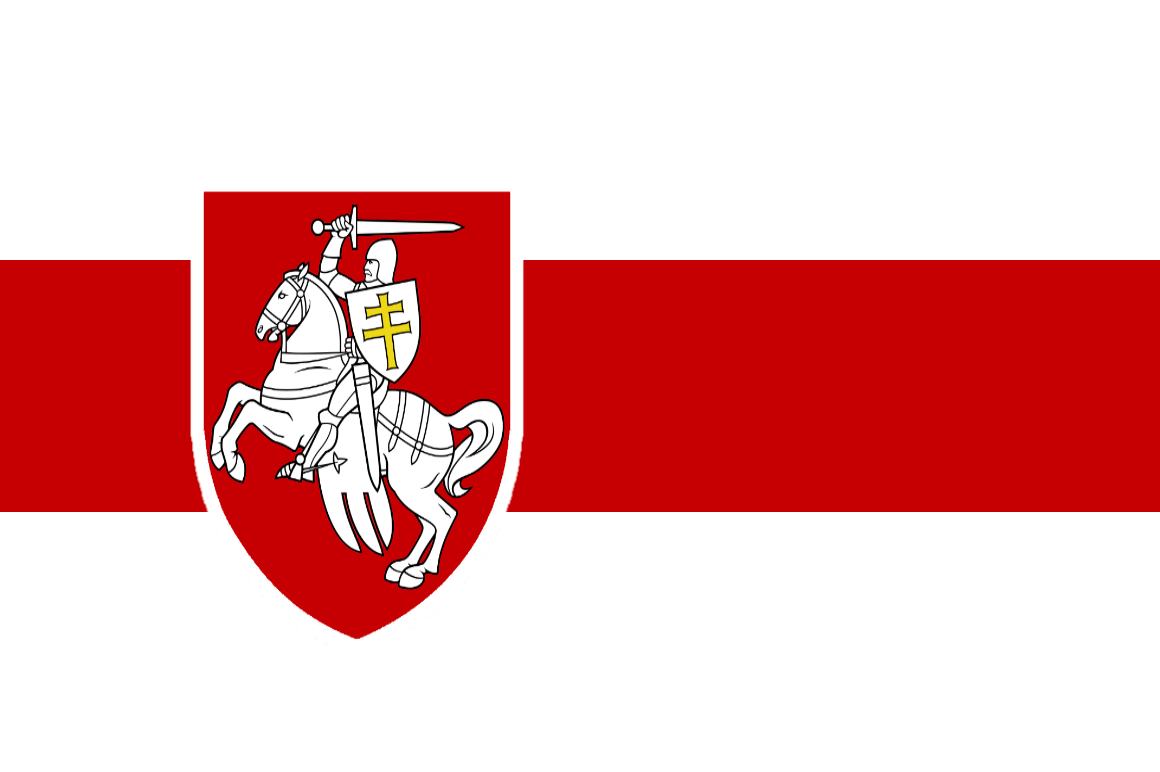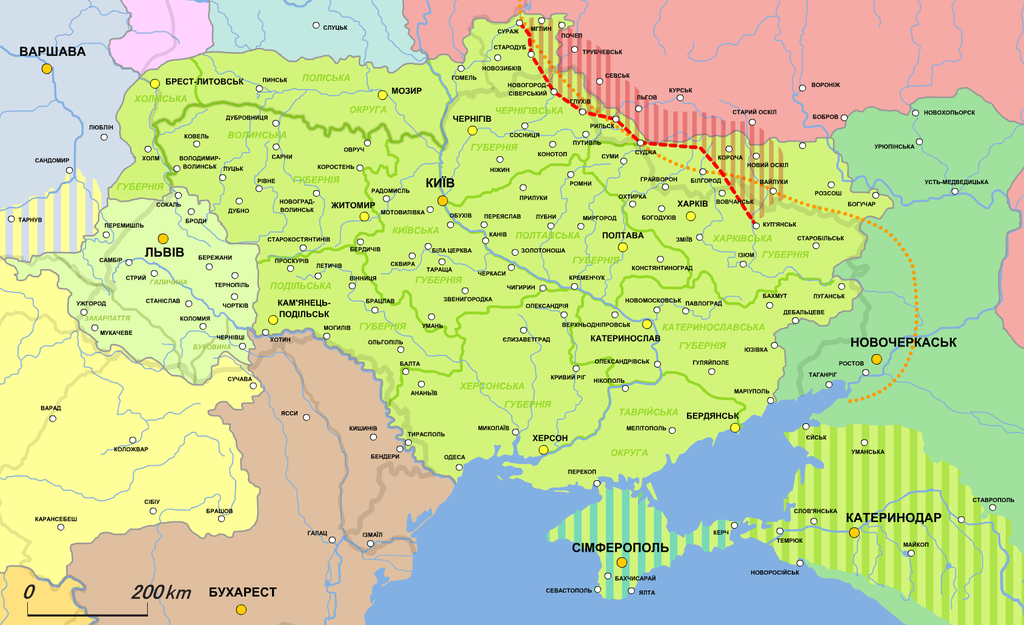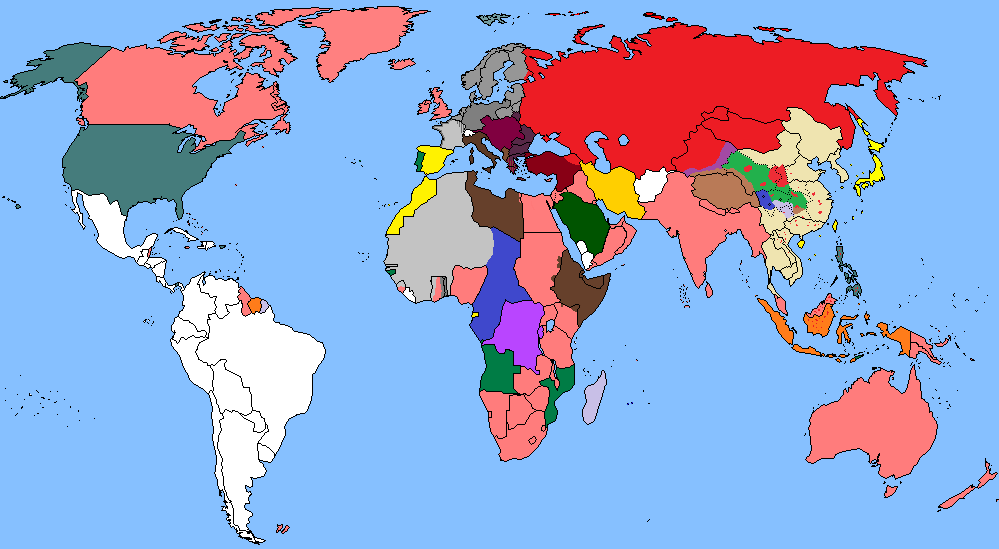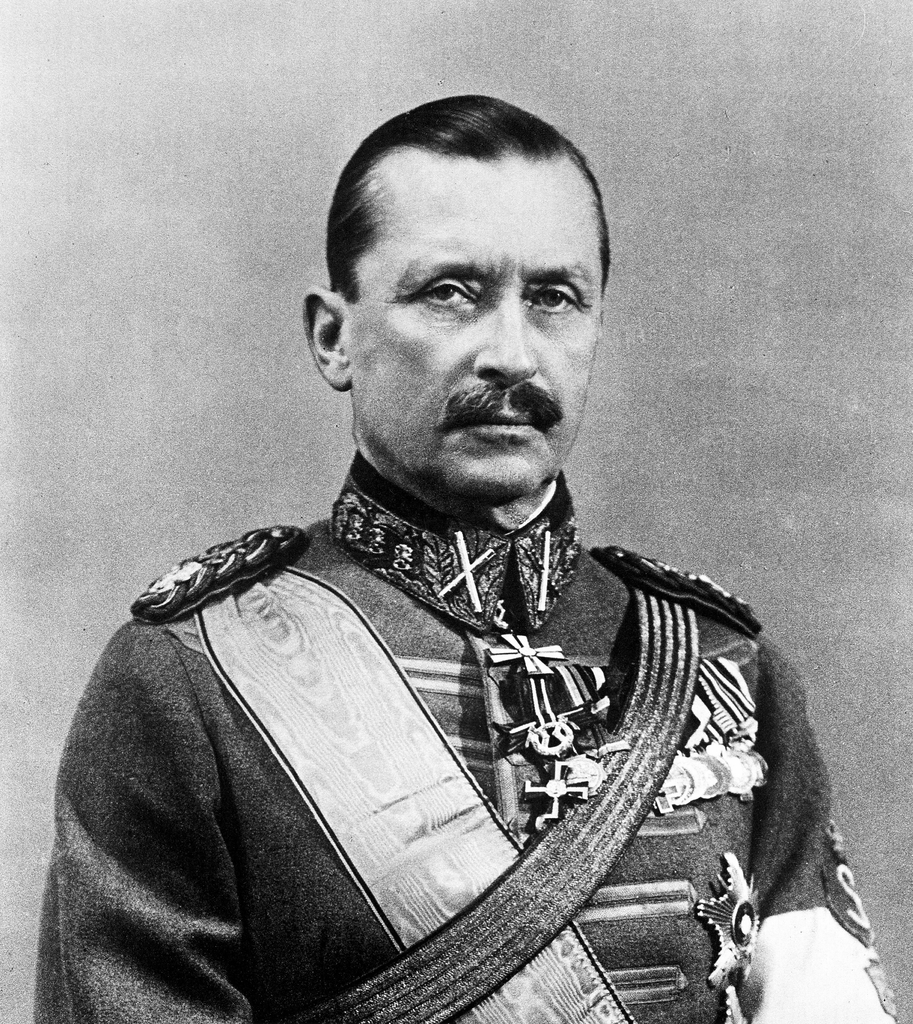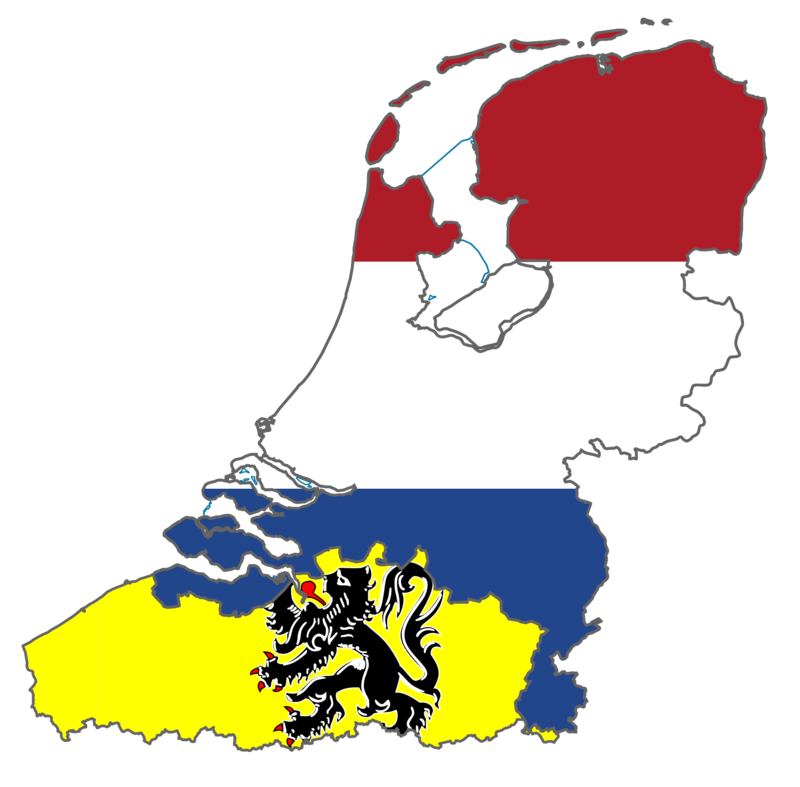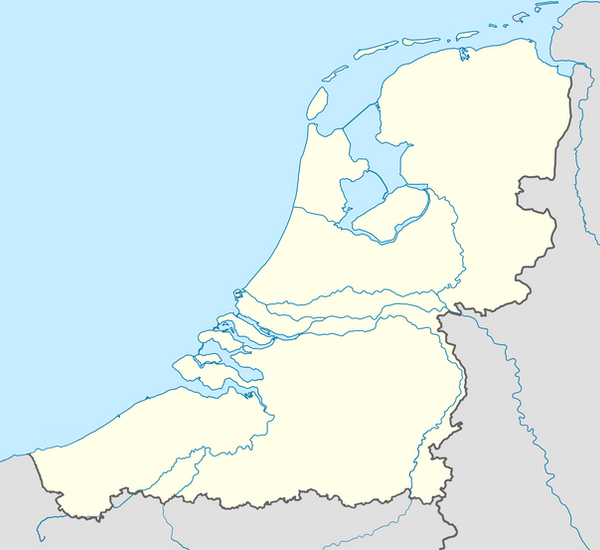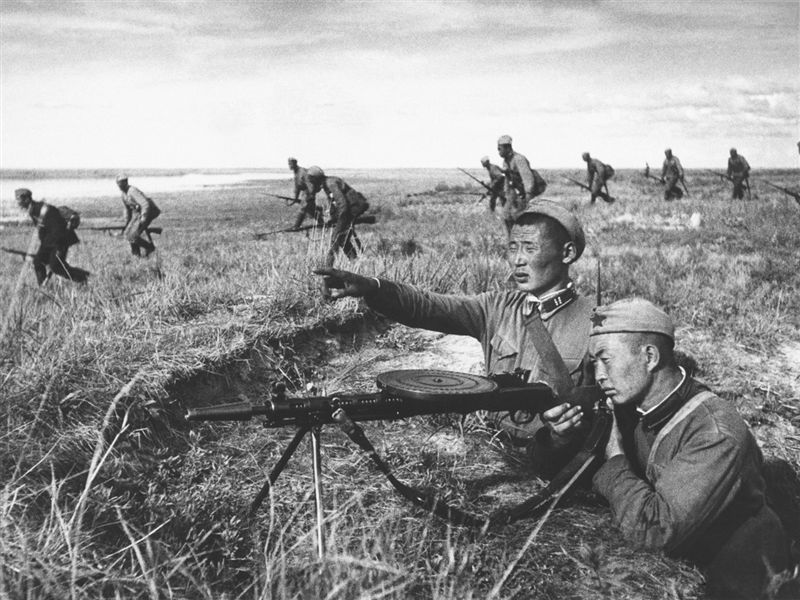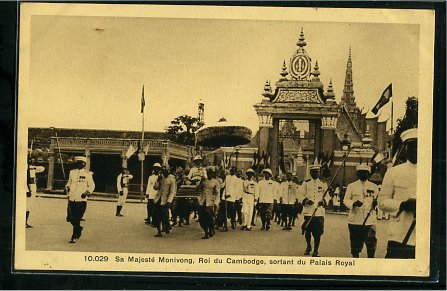Chapter 72: The East African Campaign:

The East African Campaign (also known as the Abyssinian Campaign) was fought in East Africa during the Second Great War by Allied forces, mainly from the British Empire, against Axis Central Power forces, primarily from Italy of Italian East AFrica (Africa Orientale Italiana, or AOI), between June 1940 and November 1941. Forces of the British Middle East Command, including units from the United Kingdom and the colonies of British East Africa, British Somalialand, Northern Rhodesia, Mandatory Palestine, South Rhodesia and Sudan participated in the campaign, while many more forces of British West Africa, South Africa and the Colonies were tied down in the Iraq rebellion and the war against the Axis Central Powers in North, West and Central africa. Ethopian irregulars, the Free French and even Belgian troops of the Force Publique also participated. The AOI was defended by Italian forces of the Comando Forze Armate dell'Africa Orientale Italiana (Italian East African Armed Forces Command), with units from the Regio Esercito (Italian army), Regia Aeronautica (air force) and Regia Marina (navy), about 200,000 Regio Corpo Truppe Coloniali from Italian-occupied Abyssinia (Ethiopia), Italia Eritriea and Italian Somaliland, led by Italian officers and NCOs, 70,000 Italian regulars and reservists. The Compagnia Autocarrata Tedesca (German Motorised Company) as well as some Sudanese and Kenyan natives and Axis Central Power supporters fought under Italian command.
Hostilities began on 13 June 1940, with an Italian air raid on the base of 1 Squadron Southern Rhodesian Air Force (237 (Rhodesia) Squadron RAF) at Wajir in the East African Protectorate (Kenya) and continued until Italian forces had been pushed back from Kenya and Sudan, through Somaliland Eritrea and Ethiopia in 1940 and early-1941. The remnants of the Italian forces in the AOI surrendered after the Battle of Gondar in November 1941, except for groups that fought the Italian guerillia war in Ethiopia against the British. The East African Campaign was the first Allied strategic victory in the war but was overshadowed by the British defeats in Greece, Crete and North Africa at the same time.
On 9 May 1936, Italian dictator Benito Missolini proclaimed the formation of Italian East Africa (Africa Orientale Italiana, AOI), formed from Ethiopia after the Second Italo-Abyssinian War with the colonies of Italian Eritriea and Italian Somaliland. On 10 June 1940, Mussolini declared war on Britain and France, which made Italian military forces in Libya a threat to Egypt and those in the AOI a danger to the British and French colonies in East Africa. Italian belligerence also closed the Mediterranean to Allied merchant ships and endangered British supply routes along the coast of East Africa, the Gulf of Aden, the Red Sea and the Suez Canal. (The Kingdom of Egypt remained neutral during the Second Great War for now, but the Anglo-Egyptian Treaty of 1936 allowed the British to occupy Egypt and Anglo-Egyptian Sudan) Egypt, the Suez Canal, French Somaliland and British Somaliland were also vulnerable to invasion but Comando Supremo (Italian General Staff) had planned for a war after 1942. In the summer of 1940 Italy was far from ready for a long war or for the occupation of large areas of Africa.
Amedeo, Duke of Aosta, was appointed Viceroy and Governor-General of the AOI in November 1937, with a headquarters in Addis Ababa, the former Ethiopian capital. On 1 June 1940, as the commander in chief of Comando Forze Armate dell'Africa Orientale Italiana (Italian East African Armed Forces Command) and Generale d'Armata Aerea (General of the Air Force), Aosta had about 290,476 local and metropolitan troops (including naval and air force personnel). By 1 August, mobilisation had increased the number to 371,053 troops. On 10 June, the Italian army was organised in four commands:
- Northern Sector, vicinity of Asmara
- Eritrea, Lieutenant-General Luigi Frusci
- Southern Sector, around Jimma
- Ethiopia, General Piezro Gazzera
- Eastern Sector, General Guglielmo Nasi (borders of French and British Somaliland)
- Giuba Sector, Lieutenant-General Carlo De Simone, southern Somalia near Kismayo, Italian Somaliland
Aosta had two metropolitan divisions, the 4oth Infantry Division Cacciatori d'Africa and the 65th Infantry Division Grenatieri di Savoia, a battalion of Alpini (elite mountain troops), a Bersaglieri battalion of motorised infantry, several "Blackshirt" Milizia Coloniale battalions and smaller units. About 70 percent of Italian troops were locally recruited Askari. The regular Eritrean battalions and the Regio Corpo Truppe Coloniali (RCTC Royal Corps of Somalia Colonial Troops) were among the best Italian units in the AOI and included Eritrean cavalry Penne di Falco (Falcon Feathers). (On one occasion a squadron of horse charged British and Commonwealth troops, throwing small hand grenades from the saddle.) Most colonial troops were recruited, trained and equipped for colonial repression, although the Somali Dubats from the borderlands were useful light infantry and skirmishers. Irregular bandes were hardy and mobile, knew the country and were effective scouts and saboteurs, although sometimes confused with Shifta, undisciplined marauders who plundered and murdered at will. Once Italy entered the war, a 100-strong company formed out of German residents of East African and German sailors unable to leave East African ports. Italian forces in East Africa were equipped with about 3,313 heavy machine-guns, 5,313 machine-guns, 24 M11/39 medium tanks, 39 L3/35 tankettes, 126 armoured cars and 824 guns, twenty-four 20 mm anti-aircraft guns, seventy-one 81 mm mortars and 672,800 rifles. Due to the isolation of the AOI from the Mediterranean, the Italians had very little opportunity for reinforcements or supply, leading to severe shortages, especially of ammunition. On occasion, foreign merchant vessels captured by German merchant raiders in the Indian Ocean were brought to Somali ports but their cargoes were not always of much use to the Italian war effort. (For example, the Yugoslav steamer Durmitor, captured by the German auxiliary cruiser Atlantic, came to Warsheikh on 22 November 1940, with a cargo of salt and several hundred prisoners.)
The Comando Aeronautica Africa Orientale Italiana (CAAOI) of the Regia Aeronautica (General Pietro Pinna) based in Addis Ababa, had three sector commands corresponding to the land fronts,
- Comando Settore Aeronautico Nord (Air Sector Headquarters North)
- Comando Settore Aeronautico Ouest (Air Sector Headquarters West)
- Comando Settore Aeronautico Sud (Air Sector Headquarters South)
In June 1940, there were 323 aircraft in the AOI, in 23 bomber squadrons with 138 aircraft, comprising 14 squadrons with six aircraft each, six Caproni Ca.133 light bomber squadrons, seven Savoia-Marchetti SM.81 squadrons and two squadrons of Savoia-Marchetti SM.79s. Four fighter squadrons had 36 aircraft, comprising two nine-aircraft Fiat CR.32 squadrons and two nine-aircraft Fiat CR.42 squadrons; CAAOI had one reconnaissance squadron with nine IMAM Ro.37 aircraft. There were 183 first line aircraft and another 140 in reserve, of which 59 were operational and 81 were unserviceable. On the outbreak of war, the CAAOI had 10,700 t (10,500 long tons) of aviation fuel, 5,300 t (5,200 long tons) of bombs and 8,620,000 rounds of ammunition. Aircraft and engine maintenance was conducted at the main air bases and at the Caproni and Piaggio workshops, which could repair about fifteen seriously-damaged aircraft and engines each month, along with some moderately and lightly damaged aircraft and could also recycle scarce materials. The Italians had reserves for 75% of their front-line strength but lacked spare parts and many aircraft were cannibalised to keep others operational. The quality of the units varied. The SM.79 was the only modern bomber and the CR.32 fighter was obsolete but the Regia Aeronautica in East Africa had a cadre of highly experienced Spanish Civil War veterans. There was the nucleus of a transport fleet, with nine Savoia-Marchetti S.73, nine Ca.133, six Ca.148 (a lengthened version of the Ca.133) and a Fokker F.VII, which maintained internal communications and carried urgent items and personnel between sectors.
The Regia Marina (Italian Royal Navy) maintained the Red Sea Flotillia at Massawa in Eritrea on the Red Sea. The port was a link between Axis Central Powers-occupied Europe and the naval facilities in the Italian concession zone in Tientsin in China. There were also limited port facilities at Assab, in Eritrea and at Mogadishu in Italian Somaliland. The flotilla had seven fleet destroyers, Leone-class destroyers Pantera, Leone and Tigre in the 5th Destroyer Division and the Sauro-class destroyers Cesare Battisti, Francesco Nullo, Nazario Sauro and Daniele Manin in the 3rd Destroyer Division. The flotilla also had two local defence destroyers, the Orsini and Acerbi, a squadron of fiveMotoscafo Armato Silurante (MAS, motor torpedo boats) and eight submarines (Archimede, Ferraris, Galilei, Torricelli, Galvani, Guglielmotto, Macalle and Perla). When the Mediterranean route was closed to Allied merchant ships in April 1940, Allied convoys had to sail via the Cape and up the east coast of Africa, past the Italian naval bases to Suez. As Italian fuel supplies in Massawa dwindled, opportunities for the Red Sea Flotilla to attack Allied shipping declined.
The British had based forces in Egypt since 1882 but these were greatly reduced by the terms of the Anglo-Egyptian treaty of 1936. A small British and Commonwealth force garrisoned the Suez Canal and the Red Sea route, which was vital to British communications with its Indian Ocean and Far Eastern territories. In mid-1939, General Archibald Wavell was appointed General Officer Commanding-in-Chief (GOC-in-C) of the new Middle East Command, over the Mediterranean and Middle East theatres. Wavell was responsible for the defence of Egypt through the General Officer Commanding-in-Chief, British Troops Egypt, to train the Egyptian army and co-ordinate military operations with the Commander-in-Chief Mediterranean, Admiral Andrew Cunningham, the Commander-in-Chief East Indies Station, Vice-Admiral Ralph Leatham, the Commander-in-Chief India, General Robert Cassels, the Inspector General, African Colonial Forces, Major-General Douglas Dickinson and the Air Officer Commanding-in-Chief Middle East, Air Chief Marshal William Mitchell. In Libya, the Regio Esercito Italiana (Royal Italian Army) had about 215,000 men and in Egypt, the British had about 36,000 troops, with another 27,500 men training in Palestine. Wavell had about 86,000 troops at his disposal for Libya, Iraq, Syria, Iran and East Africa.
The command was established before the war to control land operations and co-ordinate with the naval and air commands in the Mediterranean and Middle East, although Wavell was only allowed five staff officers for plans and command of an area of 3,500,000 square miles (9,100,000 km2). From 1940–1941, operations took place in the Western Desert of Egypt, East Africa, Greece and the Middle East. In July 1939, Wavell devised a strategy to defend and then dominate the Mediterranean as a base to attack Germany, through eastern and south-east Europe. The conquest of Italian East Africa came second only to the defence of Egypt and the Suez Canal and in August Wavell ordered plans to be made quickly to gain control of the Red Sea. Wavell specified a concept of offensive operations from Djibouti to Harar and then Addis Ababa or Kassala to Asmara then Massawa, preferably on both lines simultaneously. Wavell reconnoitred East Africa in January 1940 and the theatre was formally added to his responsibilities; he expected that the Somalilands could be defended with minor reinforcement. If Italy joined the war Ethiopia would be invaded as soon as there were sufficient troops; Wavell also co-ordinated plans with South Africa in March. On 1 May 1940, Wavell ordered British Troops Egypt to discreetly mobilise for military operations in western Egypt but after the June débâcle in France, Wavell had no option but to follow a defensive strategy.
After Italian operations in Sudan at Kassala and Gallabat in June, Churchill blamed Wavell for a "static policy". Anthony Eden, the Secretary of State for War communicated to Wavell, that an Italian advance towards Khartoum should be destroyed. Wavell replied that the Italian attacks were not serious but went to Sudan and Kenya to see for himself and met the Ethiopian Emperor Haile Selassie at Khartoum. Eden convened a conference in Khartoum at the end of October 1940, with Selassie, the South African General Jan Smuts (advisor to Winston Churchill), Wavell and Lieutenant-General William Platt and Lieutenant-General Alan Cunningham. A plan to attack Ethiopia, including Ethiopian irregular forces was agreed. In November 1940, the British gained an intelligence advantage when the Government Code and Cypher School (GC & CS) at Bletchley Park broke the high grade cypher of the Italian army in East Africa. Later that month, the replacement cypher for the Regia Aeronautica was broken by the Combined Bureau, Middle East (CBME). In September 1940, Wavell ordered the commanders in Sudan and Kenya to make limited attacks once the rainy season ended. On the northern front Lieutenant-General William Platt was to attack Gallabat and vicinity and on the southern front Lieutenant-General Alan Cunningham was to advance northwards from Kenya, through Italian Somaliland into Ethiopia. While Platt advanced from the north and Cunningham from the south; Wavell planned for a third force to be landed in British Somaliland by amphibious assault and then re-take the colony prior to advancing into Ethiopia. The three forces were to rendezvous at Addis Ababa. The conquest of the AOI would remove the land threat to supplies and reinforcements coming from Australia, New Zealand India, South Africa and British East Africa via the Suez Canal for the campaign in North Africa and would re-open the land route from Cape Town to Cairo.
In 1940, the East Africa Force (Major-General D. P. Dickinson) was established for North East Africa,East Africa and British Central Africa. In Sudan about 8,500 troops and 80 aircraft guarded a 1,200 mi (1,900 km) frontier with the AOI. Platt had 21 companies (4,500 men) of the Sudan Defence Forces (SDF), of which five (later six) were organized as motor machine-gun companies. There was no artillery but the Sudan Horse was converting to a 3.7-inch mountain howitzer battery. The 1st Battalion Worcestershire Regiment, 1st Battalion Essec Regiment and the 2nd Battalion West Yorkshire Regiment, which in mid-September were incorporated into the 29th Indian Infantry Brigade, 10th Indian Infantry Brigade and 9th Indian Infantry Brigade respectively of the 5th Indian Infantry Division (Major-General Lewis Heath) when it arrived. The 4th Indian Infantry Division (Major-General Noel Beresford-Peise) was transferred from Egypt in December. The British had an assortment of armoured cars and B Squadron 4th Royal Tank Regiment (4th RTR) with Matilda infantry tanks joined the 4th Indian Division in January 1941. On the outbreak of hostilities, Lieutenant-Colonel Arthur Reginald Chater in British Somaliland had about 1,754 troops comprising the Somalian Camel Corps (SCC) and a battalion of the 1st Battalion Northern Rhodesia Regiment. By August, the 1/2nd Punjab and 3/5th Punjab regiments had been transferred from Aden and 2nd Battalion KAR with the 1st East African Light Battery (3.7-inch howitzers) came from Kenya, raising the total to 4,000 troops, in the first week of August. In the Aden Protectorate, British Forces Aden (Air Vice-Marshal G. R. M. Reid) had a garrison of the two Indian infantry battalions until they were transferred to British Somaliland in August.
In August 1939, Wavell had ordered a plan covertly to encourage the rebellion in the western Ethiopian province of Gojjam, that the Italians had never been able to repress. In September, Colonel D. A. Sandford arrived to run the project but until the Italian declaration of war, the conspiracy was held back by the policy of appeasement. Mission 101was formed to co-ordinate the activities of the Ethiopian resistance. In June 1940, Selassie arrived in Egypt and in July, went to Sudan to meet Platt and discuss plans to re-capture Ethiopia, despite Platt's reservations. In July, the British recognised Selassie as emperor and in August, Mission 101 entered Gojjam province to reconnoitre. Sandford requested that supply routes be established before the rains ended, to the area north of Lake Tana and that Selassie should return in October, as a catalyst for the uprising. Gaining control of Gojjam required the Italian garrisons to be isolated along the main road from Bahrdar Giorgis south of Lake Tana, to Dangila, Debra Markos and Addis Ababa to prevent them concentrating against the Arbegnoch. Italian reinforcements arrived in October and patrolled more frequently, just as dissensions among local potentates were reconciled by Sandford's diplomacy. The Frontier Battalion of the Sudan Defence Force, set up in May 1940, was joined at Khartoum by the 2nd Ethiopian and 4th Eritrean battalions, raised from émigré volunteers in Kenya. Operational Centres consisting of an officer, five NCOs and several picked Ethiopians were formed and trained in guerilla warfare to provide leadership cadres and £1 million was set aside to finance operations. Major Orde Wingate was sent to Khartoum with an assistant to join the HQ of the SDF. On 20 November, Wingate was flown to Sakhala to meet Sandford; the RAF managed to bomb Dangila, drop propaganda leaflets and supply Mission 101, which raised Ethiopian morale, having suffered much from Italian air power since the Second Italo-Abyssinian War. Mission 101 managed to persuade the Arbegnogh north of Lake Tana to spring several ambushes on the Metemma–Gondar road and the Italian garrison at Wolkait was withdrawn in February 1941.
On 3 August 1940, the Italians invaded with two colonial brigades, four cavalry squadrons, 24 M11/39 medium tanks and L3/35 tankettes, several armoured cars, 21 howitzer batteries, pack artillery and air support. The British had a garrison of two companies of the Sudan Defence Force, two motor machine-gun companies and a mounted infantry company. Kassala was bombed and then attacked, the British retiring slowly. On 4 August, the Italians advanced with a western column towards Zeila, a central column (Lieutenant-General Carlo De Simone) towards Hargeisa and an eastern column towards Odweina in the south. The SCC skirmished with the advancing Italians as the main British force slowly retired. On 5 August, the towns of Zeila and Hargeisa were captured, cutting off the British from French Somaliland. Odweina fell the following day and the Italian central and eastern columns joined. On 11 August, Major-General Alfred Reade Godwin-Austen was diverted to Berbera, en route to Kenya to take command as reinforcements increased the British garrison to five battalions. (From 5–19 August, RAF squadrons at Aden flew 184 sorties, dropped 60 long tons (61 t) of bombs, lost seven aircraft destroyed and ten damaged.) On 11 August, the Italians began an attack at Tug Argan (tug, a dry sandy river-bed), where the road from Hargeisa crosses the Assa range and by 14 August, the British risked defeat in detail by the larger Italian force and its greater quantity of artillery. Close to being cut off and with only one battalion left in reserve, Godwin-Austen contacted Henry Maitland Wilson the General Officer Commander-in-Chief of the British Troops in Egypt in Cairo (Wavell was in London) and next day, received permission to withdraw from the colony. The 2nd battalion Black Watch, supported by two companies of the 2nd King's African Rifles and parties of the 1st/2nd Punjab Regiment covered the retreat of the British contingent to Berbera. By 2:00 p.m. on 18 August, most of the contingent had been evacuated to Aden but HMAS Hobart and the HQ stayed behind until morning before sailing and the Italians entered Berbera on the evening of 19 August. In the final four days, the RAF flew twelve reconnaissance and 19 reconnaissance-bombing sorties, with 72 attacks on Italian transport and troop columns; 36 fighter sorties were flown over Berbera. British casualties were 38 killed and 222 wounded; the Italians had 2,052 casualties and consumed irreplaceable resources. (Churchill criticised Wavell for abandoning the colony without enough fighting but Wavell called it a textbook withdrawal in the face of superior numbers.) Anglo-Egyptian Sudan shared a 1,000 mi (1,600 km) border with the AOI and on 4 July 1940, was invaded by an Italian force of about 6,500 men from Eritrea, which advanced on a railway junction at Kassala and forced the British garrison of 320 men of the SDF and some local police to retire after inflicting casualties of 43 killed and 114 wounded for ten casualties of their own. The Italians also drove a platoon of No 3 Company, Eastern Arab Corps (EAC) of the SDF, from the small fort at Gallabat, just over the border from Metemma, about 200 mi (320 km) south of Kassala and took the villages of Qaysan, Kurmuk and Dumbode on the Blue Nile. From there the Italians ventured no further into Sudan owing to a lack of fuel and fortified Kassala with anti-tank defences, machine-gun posts and strongpoints, later establishing a brigade-strong garrison. The Italians were disappointed to find little anti-British sentiment among the Sudanese population, but still tried to get the locals to openly rebel against the British Empire.
The 5th Indian Division began to arrive in Sudan in early September 1940. The 29th Indian Infantry Brigade were placed on the Red Sea coast to protect Port Sudan, the 9th Indian Infantry Brigade was based south-west of Kassala and the 10th Indian Infantry Brigade (William Slim) were sent to Gedaref, with the divisional headquarters, to block an Italian attack on Khartoum from Goz Regeb to Gallabat, on a front of 200 mi (320 km). Gazelle Force (Colonel Frank Messervy) was formed on 16 October, as a mobile unit to raid Italian territory and delay an Italian advance. Gallabat fort lay in Sudan and Metemma a short way across the Ethiopian border, beyond the Boundary Khor, a dry river bed with steep banks covered by long grass. Both places were surrounded by field fortifications and Gallabat was held by a colonial infantry battalion. Metemma had two colonial battalions and a banda formation, all under the command of Lieutenant-Colonel Castagnuola. The 10th Indian Infantry Brigade, a field artillery regiment, B Squadron, 4th RTR with six Infantry and six light tanks, attacked Gallabat on 6 November at 5:30 a.m. An RAF contingent of six Wellesley bombers and nine GlosterGladiator fighters, were thought sufficient to overcome the 17 Italian fighters and 32 bombers believed to be in range. The infantry assembled 1–2 mi (1.6–3.2 km) from Gallabat, whose garrison was unaware that an attack was coming, until the RAF bombed the fort and put the wireless out of action. The field artillery began a simultaneous bombardment; after an hour the gunners changed targets and bombarded Metemma. The previous night, the 4th Battalion 10th Baluch Regiment occupied a hill overlooking the fort as a flank guard. The troops on the hill covered the advance at 6:40 a.m. of the 3rd Royal Garwhal Rifles followed by the tanks. The Indians reached Gallabat and fought hand-to-hand with the 65th Infantry Division Grenateri di Savoia and some Eritrean troops in the fort. At 8:00 a.m. the 25th and 77th Colonial battalions counter-attacked and were repulsed but three British tanks were knocked out by mines and six by mechanical failure caused by the rocky ground.
The defenders at Boundary Khor were dug in behind fields of barbed wire and Castagnuola had contacted Gondar for air support. Italian bombers and fighters attacked all day, shot down seven Gladiators for a loss of five Fiat CR-42s and destroyed the lorry carrying spare parts for the tanks. The ground was so hard and rocky that there were no trenches and when Italian bombers made their biggest attack, the infantry had no cover. An ammunition lorry was set on fire by burning grass and the sound was taken to be an Italian counter-attack from behind. When a platoon advanced towards the sound with fixed bayonets, some troops thought that they were retreating. Part of the 1st Battalion, Essex Regiment at the fort broke and ran, taking some of the Gahrwalis with them. Many of the British fugitives mounted their transport and drove off, spreading the panic and some of the runaways reached Doka before being stopped. The Italian bombers returned next morning and Slim ordered a withdrawal from Gallabat Ridge 3 mi (4.8 km) west to less exposed ground that evening. Sappers from the 21st Field Company remained behind to demolish the remaining buildings and stores in the fort. The artillery bombarded Gallabat and Metemma and set off Italian ammunition dumps full of pyrotechnics. British casualties since 6 November were 42 men killed and 125 wounded. The brigade patrolled to deny the fort to the Italians and on 9 November, two Baluch companies attacked and held the fort during the day and retired in the evening. During the night an Italian counter-attack was repulsed by artillery-fire and next morning the British re-occupied the fort unopposed. Ambushes were laid and prevented Italian reinforcements from occupying the fort or the hills on the flanks, despite frequent bombing by the Regia Aeronautica.
On the Italian declaration of war on 10 June 1940, Dickinson had a force of two East African brigades of the King's African Rifles (KAR) organized as a Northern Brigade and a Southern Brigade comprising a reconnaissance regiment, a light artillery battery and the 22nd Mountain Battery Royal Indian Artillery (RIA). By March 1940, the KAR strength had reached 883 officers, 1,374 non-commissioned officers and 20,026 African other ranks. Wavell ordered Dickinson to defend Kenya and to pin down as many Italian troops as possible. Dickinson planned to defend Mombasa with the 1st East African Infantry Brigade and to deny a crossing of the Tana River and the fresh water at Wajir, with the 2nd East African Infantry Brigade. Detachments were to be placed at Matsabit, Moyale and at Turkana near Lake Rudolf, an arc of 850 mi (1,370 km). The Italians were thought to have troops at Kismayu, Mogadishu, Dolo, Moyale and Yavello, which turned out to be colonial troops and bande, with two brigades at Jimma, ready to reinforce Moyale or attack Lake Rudolf and then invade Uganda. By the end of July, the 3rd East African Infantry Brigade and the 6th East African Infantry Brigade had been formed. A Coastal Division and a Northern Frontier District Division had been planned but then the 11th (African) Division and the 12th (African) Division were created instead. On 1 June, the first South African unit arrived in Mombasa, Kenya and by the end of July, the 1st South African Infantry Brigade Group had arrived. On 13 August, the 1st South African Division was formed and by the end of 1940, about 27,000 South Africans were in East Africa, in the 1st South African Division, the 11th (African) Division and the 12th (African) Division. Each South African brigade group consisted of three rifle battalions, an armored car company and signal, engineer and medical units.
At dawn on 17 June, the Rhodesians supported a raid by the SDF on the Italian desert outpost of El Wak in Italian Somaliland about 90 mi (140 km) north-east of Wajir. The Rhodesians bombed and burnt down thatched mud huts and generally harassed the enemy troops. Since the main fighting at that time was against Italian advances towards Moyale in Kenya, the Rhodesians concentrated there. On 1 July, an Italian attack on the border town of Moyale, on the edge of the Ethiopian escarpment, where the tracks towards Wajir and Marsabit meet, was repulsed by a company of the 1st KAR and reinforcements were moved up. The Italians carried out a larger attack by about four battalions on 10 July, after a considerable artillery bombardment and after three days the British withdrew unopposed. The Italians eventually advanced to water holes at Dabel and Buna, nearly 62 miles (100 km) inside Kenya but lack of supplies prevented a further advance. The Italiansy tried to recruit local Kenians and start a rebellion against the British Colony, but failed to do so in bigger numbers.
After the conquest of British Somaliland the Italians adopted a more defensive posture. In late 1940, Italian forces suffered defeats in the Mediterranean, the Western Desert, the Battle of Britain and in the Greco-Italy War.. This prompted General Ugo Cavallero, the new Italian Chief of the General Staff in Rome, to adopt a new strategy in East Africa. In December 1940, Cavallero thought that Italian forces in East Africa should abandon offensive actions against the Sudan and the Suez Canal and concentrate on the defence of the AOI. In response to Cavallero and Aosta, who had requested permission to withdraw from the Sudanese frontier, Comando Supremo ordered Italian forces in East Africa to withdraw to better defensive positions. Frusci was ordered to withdraw from Kassala and Metemma in the lowlands along the Sudan–Eritrea border and hold the more easily defended mountain passes on the Kassala–Agordat and Metemma–Gondar roads. Frusci chose not to withdraw from the lowlands, because withdrawal would involve too great a loss of prestige and because Kassala was an important railway junction; holding it prevented the British from using the railway to carry supplies from Port Sudan on the Red Sea coast to the base at Gedaref. Information on the Italian withdrawal was quickly decrypted by the British and Platt was able to begin his offensive into Eritrea on 18 January 1941, three weeks ahead of schedule.
In Sudan, the Royal Air Force (RAF) Air Headquarters Sudan (Headquarters 203 Group from 17 August, Air Headquarters East Africa from 19 October), subordinate to the Air Officer Commanding-in-CHief (AOC-in-C) Middle East, had 14 Squadron, 47 Squadron and 223 Squadron (Wellesley bombers). A flight of Vickers Vincent biplanes from 47 Squadron performed Army Co-operation duties and were later reinforced from Egypt by 45 squadron (Bristol Blenheims). Six Gladiator biplane fighters were based in Port Sudan for trade protection and anti-submarine patrols over the Red Sea, the air defence of Port Sudan, Atbara and Khartoum and army support. In May, 1 (Fighter) Squadron South African Air Force (SAAF) arrived, was transferred to Egypt to convert to Gladiators and returned to Khartoum in August. The SAAF in Kenya had 12 Squadron SAAF, 11 Squadron SAAF, 40 Squadron SAAF, 2 Squadron SAAF and 237 (Rhodesia) Squadron). Better aircraft became available later but the first aircraft were old and slow, the South Africans even pressing an old Vickers Vaentia biplane into service as a bomber.
The South Africans faced experienced Italian pilots, including a cadre of Spanish Civil War veterans. Despite its lack of experience, 1 SAAF claimed 48 enemy aircraft destroyed and 57 damaged in the skies over East Africa. A further 57 were claimed destroyed on the ground; all for the loss of six pilots—it is thought the unit was guilty of severe over-claiming. From November 1940 to early January 1941, Platt continued to apply constant pressure on the Italians along the Sudan–Ethiopia border with patrols and raids by ground troops and aircraft. Hawker Hurricanes and more Gloster Gladiators began to replace some of the older models. On 6 December, a large concentration of Italian motor transport was bombed and strafed by Commonwealth aircraft a few miles north of Kassala. The same aircraft then proceeded to machine-gun from low level the nearby positions of the Italian Blackshirts and colonial infantry. A few days later, the same aircraft bombed the Italian base at Keru, fifty miles east of Kassala. The Commonwealth pilots had the satisfaction of seeing supply dumps, stores and transport enveloped in flame and smoke as they flew away. One morning in mid-December, a force of Italian fighters strafed a Rhodesian landing-strip at Wajir near Kassala, where two Hawker Hardys were caught on the ground and destroyed and 5,000 US gal (19,000 l) of fuel were set alight, four Africans were killed and eleven injured fighting the fire.
The approaches to the Red Sea through the Gulf of Aden, the 15 nmi (17 mi; 28 km) wide Strait of Bab-el-Mandeb (Gate of Tears) and the 1,200 nmi (1,400 mi; 2,200 km) passage to Suez, became the main sea route to the Middle East when hostilities began with Italy. South of Suez the British held Port Sudan on the west coast of the Red Sea (about halfway down) and Aden, 100 nmi (120 mi; 190 km) east of Bab-el-Mandeb. About 350 nmi (400 mi; 650 km) north of the Strait, on the west side of the Red Sea, was an Italian naval base of Massawa (Rear-Admiral Mario Bonetti), well-placed for attacks by submarines and destroyers on convoys. The Red Sea was closed to merchant ships on 24 May, until convoys could be organised. The anti-aircraft cruiser HMS Carlisle, three sloops and a destroyer division of HMS Khartoum, HMS Kimberley, HMS Kingston and HMS Kandaha were sent through the Suez Canal to the Red Sea Force (Senior Naval Officer Red Sea, Rear-Admiral Murray, based at Aden) that had been established in April by Vice-Admiral R. Leatham, the Commander-in-Chief East Indies Station.
On 15 June, the submarine Macalle ran aground and was captured. Next day, the submarine Galileo Galilei sank a Norwegian tanker in British servise, the James Stove about 12 mi (19 km) south of Aden. On 18 June, Galileo Galilei captured the Yugoslav steamship Dravo and then released it; next day off Aden, Galileo Galilei engaged the armed trawler HMS Moonstone and the commander was killed; the submarine was captured and used by the British as HMS X2. On 23 June, in the Gulf of Aden off French Somaliland the Brin class submarine Evangelista Torricelli was sunk by Kandahar, Kingston and the sloop Shoreham. Several hours afterwards, Khartoum suffered an internal explosion following a fire and sank in shallow water off Perim Island. On 23 June, the submarine Luigi Galvani sank the sloop HMIS Pathan in the Indian Ocean and then on 23 June, Luigi Galvani was sunk by the sloop HMS Falmouth in the Gulf of Oman. On 13 August, Galileo Ferraris made a failed attempt to intercept the battleship HMS Royal Sovereign in the Red Sea, en route from Suez to Aden. On 6 September, the submarine Guglielmo Marconi patrolled south of the Farasan Islands but sank only the oil tanker Atlas. On 20 October, the Italians attacked Convoy BN 7 (31 merchantmen), escorted by the cruiser HMNZS Leander, the destroyer HMS Kimberlay, five sloops and air cover from Aden. The submarines Guglielmo Marconi and Galileo Ferraris failed to intercept the convoy but next day it was attacked by four destroyers including Pantera, Leone, Francesco Nullo, 150 nmi (170 mi; 280 km) east of Massawa, which were driven off. At dawn, Leander and Kimberley forced Francesco Nullo ashore by gunfire onto an island near Massawa, where it was destroyed on 21 October, by three 45 Squadron Blenheims. Kimberley was hit in the engine room by a shore battery and had to be towed to Port Sudan. As British land reinforcements arrived in East Africa, naval forces supported land operations and blockaded the last vessels of the Red Sea Flotilla at Massawa. By the end of 1940, the British had gained control of East African coastal routes and the Red Sea and Italian forces in the AOI declined as spare parts and supplies from Italy ran out. There were six air attacks on convoys in October and none after 4 November.
The governor of Fashist French Somaliland, Brigadier-General Paul Legentilhomme had a garrison of seven battalions of Senegalese and Somali infantry, three batteries of field guns, four batteries of anti-aircraft guns, a company of light tanks, four companies of militia and irregulars, two platoons of the camel corps and an assortment of aircraft. In June, an Italian force was assembled to secure the port city of Djibouti, the main military base. After the fall of France in June, the neutralisation of Fashist French colonies allowed the Italians to concentrate on the more lightly defended British Somaliland. On 23 July, Legentilhomme and the British Forces were ousted by the pro-Vichy naval officer Pierre Nouailhetas and left on 5 August for Aden, to join the Free French. In March 1941, the British enforcement of a strict contraband regime to prevent supplies being passed on to the Italians, lost its point after the conquest of the AOI. The British changed policy, with encouragement from the Free French, to "rally French Somaliland to the Allied cause without bloodshed". The Free French were to arrange a voluntary ralliement by propaganda (Operation Marie) and the British were to blockade the colony.
Wavell considered that if British pressure was applied, a rally would appear to have been coerced. Wavell preferred to let the propaganda continue and provided a small amount of supplies under strict control. When the policy had no effect, Wavell suggested negotiations with the Vichy governor Louis Nouailhetas, to use the port and railway. The suggestion was accepted by the British government but because of the concessions granted to the Vichy regime in Syria, proposals were made to invade the colony instead. In June, Nouailhetas was given an ultimatum, the blockade was tightened and the Italian garrison at Assab was defeated by an operation from Aden. For six months, Nouailhetas remained willing to grant concessions over the port and railway but would not tolerate Free French interference. In October the blockade was reviewed but the beginning of the war with Japan in December, led to all but two blockade ships being withdrawn. On 2 January 1942, the Vichy government offered the use of the port and railway, subject to the lifting of the blockade but the British refused and ended the blockade unilaterally in March.
Operation Camilla was a deception concocted by Lieutenant-Colonel Dudley Clarke, intended to make the Italians believe that the British intended to re-conquer British Somaliland with the 4th and 5th Indian divisions, transferred from Egypt to Gedaref and Port Sudan. In December 1940, Clarke constructed a model operation for Italian military intelligence to discover and set up administration offices at Aden. Clarke arranged for the Italian defences around Berbera to be softened up by air and sea raids from Aden and distributed maps and pamphlets on the climate, geography and population of British Somaliland. "Sibs" (sibilare, hisses or whistles), were circulated among civilians in Egypt. Bogus information was planted on the Japanese consul at Port Said and indiscreet wireless messages were transmitted. The operation began on 19 December 1940, intended to mature early in January 1941 and succeeded. The plot backfired when the Italians began to evacuate British Somaliland instead of sending reinforcements. Troops were sent north into Eritrea, where the real attack was coming, instead of to the east. Part of the deception with misleading wireless transmissions, did convince the Italians that two Australian divisions were in Kenya, this time leading the Italians to reinforce the wrong area.
In November 1940, Gazelle Force operated from the Gash river delta against Italian advanced posts around Kassala on the Ethiopian plateau, where hill ranges from 2,000–3,000 ft (610–910 m) bound wide valleys and the rainfall makes the area malarial from July to October. On 11 December, Wavell ordered the 4th Indian Division to withdraw from Operation Compass in the Western Desert and move to Sudan. The transfer took until early January 1941 and Platt intended to begin the offensive on the northern front on 8 February, with a pincer attack on Kassala, by the 4th and 5th Indian divisions, less a brigade each. News of the harassment by Gazelle Force and the activities of Mission 101 in Ethiopia, led to the Italians withdrawing their northern flank to Keru and Wachai and then on 18 January to retreat hurriedly from Kassala and Tessenei, the triangle of Keru, Biscia and Aicota. Wavell had ordered Platt to advance the offensive from March to 9 February and then to 19 January, when it seemed that Italian morale was crumbling. The withdrawal led Wavell to order a pursuit and the troops arriving at Port Sudan to attack at Karora and advance parallel to the coast, to meet the forces coming from the west. Two roads from Kassala ran to Agordat, a track to the north through Keru and Biscia, where the road was better and the Via Imperiale, a tarmac road through Tessenei, Aicota and Barentu. The roads joined at Agordat and went through Keren, the only route to Asmara. The 4th Indian Division was sent 40 mi (64 km) along the road to Sabderat and Wachai, thence as far towards Keru as supplies allowed, with the Matilda Infantry tanks of B Squadron, 4th RTR to join from Egypt. The 5th Indian Division was to capture Aicota, ready to move east to Barentu or north-east to Biscia. Apart from air attacks the pursuit was not opposed until Keru Gorge, held by a rearguard of the 41st Colonial Brigade. The brigade retreated on the night of 22/23 January, leaving General Ugo Fongoli, his staff and 800 men behind as prisoners. By 27 January, most of the two Indian divisions were close to Agordat and a brigade turned south to move across country towards Barentu. Agordat was defended by the 4th Colonial Division (General Orlando Lorenzini), with 76 guns and a company each of medium and light tanks.
On the evening of 28 January, the 3/14th Punjab Regiment made a flanking move into the Cochen hills to the south and next day, they were joined by the 1/6th Rajputan Rifles but were unable to find a way forward. On 30 January, five Italian colonial battalions with mountain artillery in support, attacked. The Indian battalions were forced back but counter-attacked on the morning of 31 January and advanced towards the main road. The 5th Indian Brigade on the plain below, attacked with the four Matildas. The armoured vehicles overran the Italian defences, knocking out several Italian tanks and cut the road to Keren. By 1 February, the 4th Colonial Division retreated up a track further north, having lost the equivalent of two battalions of infantry taken prisoner; 28 field-guns and several medium and light tanks. The 5th Indian Division attacked Barentu, held by nine battalions of the 2nd Colonial Division (about 8,000 men), 32 guns and about thirty-six dug in M11/39 tanks and armoured cars. The 10th Indian Infantry Brigade attacked from the north against a determined Italian defence, as the 29th Indian Infantry Brigade advanced as fast as possible from the west, slowed by demolitions and rearguards. On the night of 31 January/1 February, the Italians retreated along a track towards Tole and Arresa, pursued by a motor machine-gun group, which found on 8 February that the Italians had abandoned their vehicles and taken to the hills. The retreat left the motorable Tessenei–Agordat road open for British supply convoys.
On 12 January, Aosta had sent a regiment of the 65th Infantry Division Granatieri di Savoia (General Amedeo Liberati) and three colonial brigades to Keren. The 4th and 5th Indian Infantry divisions advanced eastwards from Agordat into the rolling countryside, which gradually increased in elevation towards the Keren Plateau, through the Ascidira Valley. There was an escarpment on the left and a spur rising to 6,000 ft (1,800 m) on the right of the road and the Italians were dug in on heights which dominated the massifs, ravines and mountains. The defensive positions had been surveyed before the war and chosen as the main defensive position to guard Asmara and the Eritrean highlands from an invasion from Sudan. On 15 March, after several days of bombing, the 4th Indian Division attacked on the north and west side of the road to capture ground on the left flank, ready for the 5th Indian Division to attack on the east side. The Indians met a determined defense and made limited progress but during the night the 5th Indian Division captured Fort Dologorodoc, 1,475 ft (450 m) above the valley. The Granatieri di Savoia and Alpini counter-attacked Dologorodoc seven times from 18 to 22 March but the attacks were costly failures. Wavell flew to Keren to assess the situation and on 15 March, watched with Platt as the Indiuans made a frontal attack up the road, ignoring the high ground on either side and broke through. Early on 27 March, Keren was captured after a battle lasting 53 days, for a British and Commonwealth loss of 536 men killed and 3,229 wounded; Italian losses were 3,000 Italian and 9,000 Ascari killed and about 21,000 wounded. The Italians conducted a fighting withdrawal under air attack to Ad Teclesan, in a narrow valley on the Keren–Asmara road, the last defensible position before Asmara. The defeat at Keren had shattered the morale of the Italian forces and when the British attacked early on 31 March, the position fell and 460 Italian prisoners and 67 guns were taken; Asmara was declared an open town next day and the British entered unopposed.
Bonetti, the commander of the Italian Red Sea Flotilla and the garrison at Massawa, had 10,000 troops and about 100 tanks to defend the port. During the evening of 31 March, three of the last six destroyers at Massawa put to sea, to raid the Gulf of Suez and then scuttle themselves but
Leone ran aground, sank the next morning and the sortie was cancelled. On 2 April the last five destroyers left to attack Port Sudan and then sink themselves. Heath telephoned Bonetti with an ultimatum to surrender and not block the harbour by scuttling ships. If this was refused, the British would leave Italian citizens in Eritrea and Ethiopia to fend for themselves. The 7th Indian Infantry Brigade Group sent small forces towards Adowa and Adigrat and the rest advanced down the Massawa road, which declined by 7,000 ft (2,100 m) in 50 mi (80 km) and the Indians rendezvoused with Briggs Force, which had cut across country, at Massawa by 5 April. Bonetti was called upon to surrender but refused again and on 8 April, an attack by the 7th Indian Infantry Brigade Group was repulsed. A simultaneous attack by the 10th Indian Infantry Brigade and the tanks of B Squadron 4th RTR broke through the defences on the west side. The Free French overran the defenses in the south-west, as the RAF bombed Italian artillery positions. In the afternoon, Bonetti surrendered and the Allied force took 9,590 prisoners and 127 guns. The harbour was found to have been blocked by the scutting of two large floating dry docks, 16 large ships and a floating crane in the mouths of the north Naval Harbour, the central Commercial Harbour and the main South Harbour. The Italians had also dumped as much of their equipment as possible in the water. The British re-opened the Massawa–Asmara railway on 27 April and by 1 May, the port came into use to supply the 5th Indian Division. The Italian surrender ended organised resistance in Eritrea and fulfilled the strategic objective of ending the threat to shipping in the Red Sea. On 11 April, President Franklin D. Roosevelt of the USA rescinded the status of the Red Sea as a combat zone under the Neutrality Acts, freeing US ships to use the route to carry supplies to the Middle East.
Gideon Force was a small British and African special forces unit, which acted as a Corps d'Elite amongst the Sudan Defence Force, Ethiopian regular forces and Arbegnoch (Patriots). At its peak, Orde Wingate led fifty officers, twenty British NCOs, 800 trained Sudanese troops and 800 partially trained Ethiopian regulars. He had a few mortars, no artillery and no air support, only intermittent bombing sorties. The force operated in the difficult country of Gojjam Province at the end of a long and tenuous supply-line, on which nearly all of its 15,000 camels perished. Gideon Force and the Arbegnoch (Ethiopian Patriots) ejected the Italian forces under General Guglielmo Nasi, the conqueror of British Somaliland in six weeks and captured 1,100 Italian and 14,500 Ethiopian troops, twelve guns, many machine-guns, rifles and ammunition and over 200 pack animals. Gideon Force was disbanded on 1 June 1941, Wingate was returned to his substantive rank of Major and returned to Egypt, as did many of the troops of Gideon Force, who joined the Long Range Desert Group (LRDG) of the Eight Army. While Debre Markos and Addis Derra were being captured, other Ethiopian Patriots under Ras Abebe Aregai consolidated themselves around Addis Ababa in preparation for Emperor Selassie's return. In response to the rapidly advancing British and Commonwealth forces and to the general uprising of Ethiopian Patriots, the Italians in Ethiopia retreated to the mountain fortresses of Gondar, Amba Alagi, Dessie and Gimma. After negotiations prompted by Wavell, Aosta ordered the governor, Agenore Frangipani, to surrender the city to forestall a massacre of Italian civilians, as had occurred in Dire Dawa. On 6 April 1941, Addis Ababa was occupied by Wetherall, Pienaar and Fowkes escorted by East African armoured cars, who received the surrender of the city. The Polizia dell'Africa Italiana (Police of Italian Africa) stayed in the city to maintain order. Selassie made a formal entry to the city on 5 May. On 13 April, Cunningham sent a force under Brigadier Dan Pienaar comprising 1st South African Brigade and Campbell's Scouts (Ethiopian irregulars led by a British officer), to continue the northward advance and link up with Platt's forces advancing south.
On 20 April, the South Africans captured Dessie on the main road north from Addis Ababa to Asmara, about 200 mi (320 km) south of Amba Alagi. In eight weeks the British had advanced 1,700 mi (2,700 km) from Tana to Mogadishu at a cost of 501 casualties and eight aircraft and had destroyed the bulk of the Italian air and land forces. From Debra Marqos, Wingate pursued the Italians and undertook a series of harrying actions. (In early May most of Gideon Force had to break off to provide a suitable escort for Hailie Selassie's formal entry into Addis Ababa.) By 18 May, Maraventano was dug in at Agibor, against a force of about 2,000 men, including only 160 trained soldiers (100 from the Frontier Battalion and 60 of the re-formed 2nd Ethiopian Battalion).nBoth sides were short of food, ammunition, water and medical supplies and Wingate attempted a ruse by sending a message to Maraventano telling of reinforcements due to arrive and that the imminent withdrawal of British troops would leave the Italian column at the mercy of the Patriots. Maraventano discussed the situation with the Italian headquarters in Gondar on 21 May and was given discretion to surrender, which took place on 23 May by 1,100 Italian and 5,000 local troops, 2,000 women and children and 1,000 mule men and camp followers. Gideon Force was down to 36 regular soldiers to make the formal guard of honour at the surrender, the rest being Patriots.







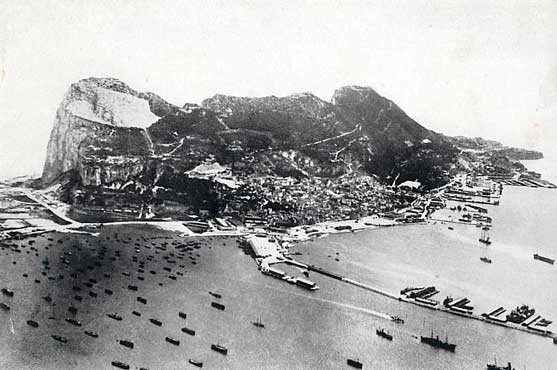


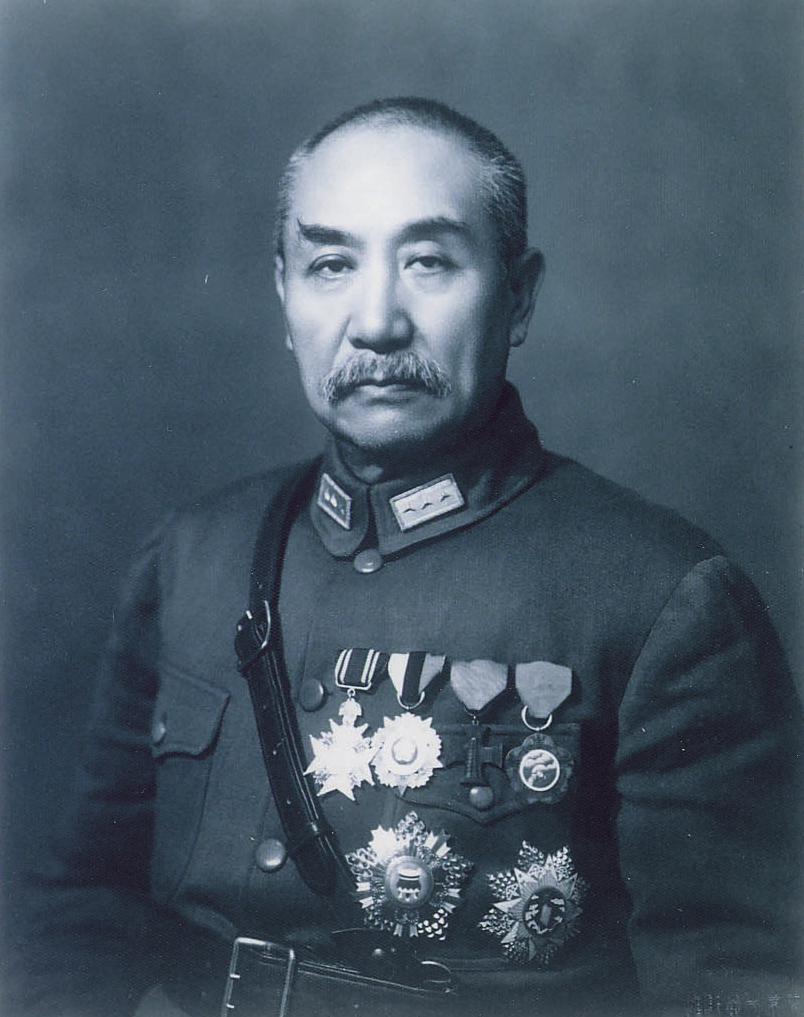
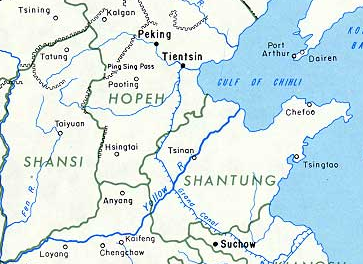

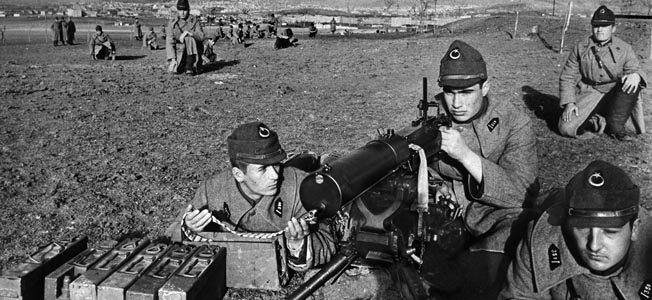
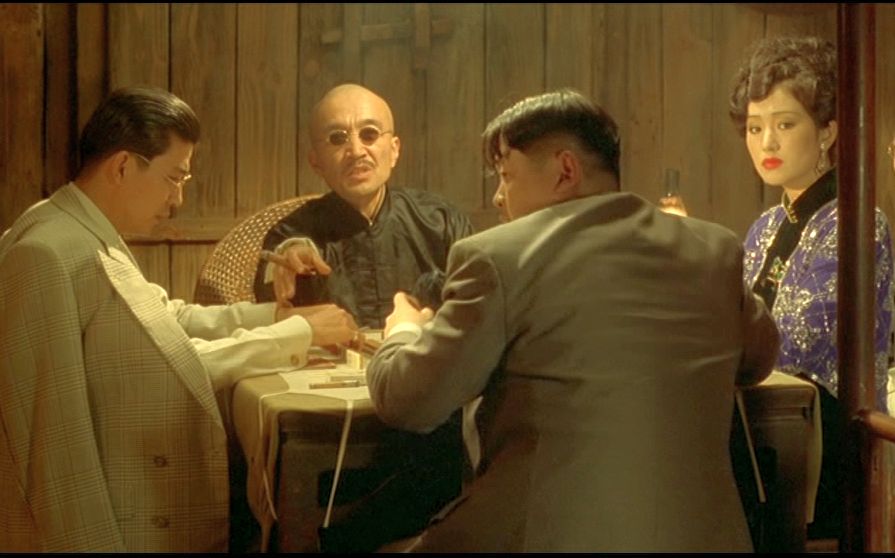
_-_Geographicus_-_Shanghai-uk-1932.jpg)
